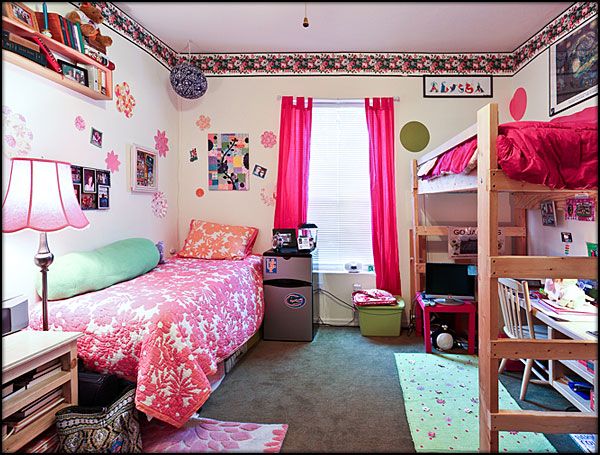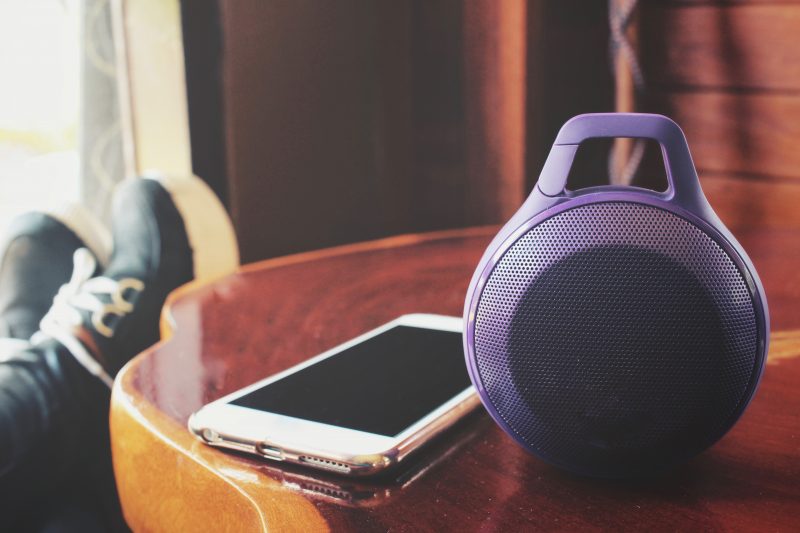No products in the cart.
How To Soundproof A Dorm Room – Cheap & Easy Soundproofing Solutions

18
Jan
For those of you who have experienced the pain of living in a college dorm, you understand what it’s like to live 5 feet away from another person (or two or three). If you’re not familiar with the normal layout of an average college dorm room, consider yourself lucky. If only you knew how to soundproof a dorm room… oh wait, you’re about to find out.
Dorm rooms are usually about 10ft X 13ft with a twin bed on each side, two dressers separating the beds and desks at the end of the beds. If you think that’s a lot of stuff to cram in a room that size, you’d be correct. Some colleges can even save space and make the room even smaller by putting the bed on a lift and putting the desks under that.
Now that I’m done venting about how awful dorms are, I’ll give you some tips on how to soundproof a dorm room on a budget so you can get some studying done or take a nap.
Read More: Make Your Bedroom Quieter
Soundproofing Your Dorm
Most of the dorm rooms on or off campus are small and minimally furnished with only a few essentials. This alone makes it easy for noise to reverberate off bare surfaces, such as hard floors and walls. Noise coming in from the outside or echoing within a small bare living space can get pretty annoying. Here are some quick and easy tips to soundproof a room that fits almost everyone’s budget.
Use White Noise in Your Room
Perhaps the cheapest and fastest way to create a peaceful environment is to create your own white noise to distract you from other unpleasant and intrusive sounds. A good place to start looking is a local thrift store for a used fan or humidifier to provide static noise that will drown out external sound.
You also have the option to use what you already have instead of going out to buy anything. For example you can use certain white noise phone apps, or white noise playlists on Spotify or Apple Music.
Remember: Adding white noise makes outside noises less distracting and annoying, but it does not actually block the sound.

If you have a little speaker on hand, it will help to amplify the white noise playlists you come across. You don’t want it to be so loud that it’s bothering you, but you want it to be loud enough to mask sound.
Soundproof the Dorm Room Windows
Some dorms, especially older dorm buildings, don’t have great windows for keeping the outside noises out. Whether it’s a group of people walking to the bars or returning from the bars, you probably don’t want to hear them while you’re studying or sleeping.
If you’re allowed to make modifications to your dorm room, you may want to consider splitting the cost of a soundproof curtain with your roommate. Not only do they act as a sound barrier, but products like the AcoustiCurtain block up to 90% of noises and blackout 100% of light—the perfect combination for creating the optimal sleep sanctuary.
Whether it’s for a late night, a mid-day nap or a weekend of studying, sound blocking curtains are easy to install and is a quick cost-effective solution to quieting any dorm or apartment room.
Can Sound Absorbing Furniture Reduce Noise in a Dorm Room?
NOTE: Adding absorptive surfaces may lower the dBA level in your room by 3-5 points, but will not make a significant impact if your windows and doors are not fully sealed.
The floors in your room, which are most likely tile, are going to help sound bounce around, causing echo and reverberation. If this is the case, cover the floor with an area rug (the thicker the better). Not only will it mitigate sounds, it’ll also help pull the room together if you’re the type of person who cares about decor.
A lot of dorm rooms also have concrete walls; another feature that will cause echo in your room. Try hanging tapestries and cork boards on the walls to help absorb any echo you might be experiencing. The other soft furniture in your room such as your bed is also going to be helpful in this situation.
How to Soundproof a Dorm Room Door
If you’re familiar with all 3 of our products at Residential Acoustics, you know we have a soundproofing door cover that could help to soundproof dorm room doors. However, in this case we wouldn’t be able to recommend using one of our AcoustiDoors over your door since it’s a point of egress (main exit in case of an emergency).

Door sweeps and seals (pictured above), work to seal gaps around doors where sound could otherwise leak through. While they help to block noise, they also help to keep the A/C in your room, and can even prevent bugs from getting in!
Luckily, dorm room doors are usually solid-core, and made from solid wood. With solid-core doors, there’s really no need to worry about sound coming through the door, but sound is definitely coming in around the door. In my old dorm room, there was at least a 1/2″ gap at the bottom of my door so I could hear everything going on in the hallways.
Consider installing a door sweep at the bottom of your door to close up any gaps to prevent sound from coming through. Since you likely can’t nail into your door, we recommend a peel and stick option. You can also get peel and stick door seals (also known as weather stripping) to seal up the tops and sides of your door as well.
How to Soundproof a Dorm Room – Conclusion
We hope you find this information useful. Feel free to contact Residential Acoustics about soundproofing a room or dorm if you have any questions. Our team is always happy to help!
Summary

Article Name
College Dorm Room Soundproofing Tricks and Tips
Description
Soundproofing Options for loud dorm rooms and college residences where noise pollution disrupts studies and sleep patterns
Author
Vince Perstad
Publisher Name
Residential Acoustics
Publisher Logo

